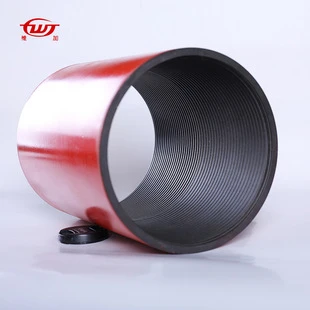- Afrikaans
- Albanian
- Amharic
- Arabic
- Armenian
- Azerbaijani
- Basque
- Belarusian
- Bengali
- Bosnian
- Bulgarian
- Catalan
- Cebuano
- Corsican
- Croatian
- Czech
- Danish
- Dutch
- English
- Esperanto
- Estonian
- Finnish
- French
- Frisian
- Galician
- Georgian
- German
- Greek
- Gujarati
- Haitian Creole
- hausa
- hawaiian
- Hebrew
- Hindi
- Miao
- Hungarian
- Icelandic
- igbo
- Indonesian
- irish
- Italian
- Japanese
- Javanese
- Kannada
- kazakh
- Khmer
- Rwandese
- Korean
- Kurdish
- Kyrgyz
- Lao
- Latin
- Latvian
- Lithuanian
- Luxembourgish
- Macedonian
- Malgashi
- Malay
- Malayalam
- Maltese
- Maori
- Marathi
- Mongolian
- Myanmar
- Nepali
- Norwegian
- Norwegian
- Occitan
- Pashto
- Persian
- Polish
- Portuguese
- Punjabi
- Romanian
- Russian
- Samoan
- Scottish Gaelic
- Serbian
- Sesotho
- Shona
- Sindhi
- Sinhala
- Slovak
- Slovenian
- Somali
- Spanish
- Sundanese
- Swahili
- Swedish
- Tagalog
- Tajik
- Tamil
- Tatar
- Telugu
- Thai
- Turkish
- Turkmen
- Ukrainian
- Urdu
- Uighur
- Uzbek
- Vietnamese
- Welsh
- Bantu
- Yiddish
- Yoruba
- Zulu
casing collar
The Importance of Casing Collars in Oil and Gas Operations
In the oil and gas industry, the integrity of well construction is paramount to ensuring safe and efficient extraction of resources. One critical component in this process is the casing collar, a key element that contributes significantly to the overall robustness of well infrastructure. This article explores the function, types, and significance of casing collars in the drilling and production phases of oil and gas operations.
What is a Casing Collar?
A casing collar is a mechanical device located on the casing string – a series of pipes that are used to line the walls of a wellbore. The primary function of the casing collar is to provide a means of connecting different lengths of casing, allowing for effective installation and proper sealing of the well. Each collar is designed to ensure that the casing is securely locked in place, preventing any movement that could compromise the stability of the well.
Types of Casing Collars
Casing collars come in various types, each suited for specific applications and depths. The two most common types of casing collars are
1. Cementing Collars These collars are used during the cementing process to provide a seal that prevents the escape of cement slurry into unwanted areas. They are often equipped with float valves that prevent backflow of the cement.
2. Heavy Wall Collars These collars are thicker and sturdier, providing additional strength to the casing in high-pressure environments. They are particularly useful in challenging geological formations where the risk of collapse is elevated.
Functions of Casing Collars
casing collar

Casing collars serve several essential functions in the drilling and production stages
1. Mechanical Support Casing collars support the entire casing string, thereby distributing mechanical loads throughout the wellbore. This is crucial for maintaining the structural integrity of the well against the forces exerted by surrounding rock formations and fluid pressures.
2. Facilitating Cementing Operations During the cementing process, casing collars play a pivotal role by ensuring that cement is properly distributed along the casing and effectively seals the annular space. This prevents fluid migration and protects groundwater resources.
3. Well Identification Casing collars are often marked with identification numbers or symbols that denote the depth or purpose of each section. This aids in monitoring the well and contributes to efficient management throughout the lifespan of the drilling operation.
Safety and Risk Mitigation
The use of casing collars is not just about operational efficiency; it is also about safety. Proper installation and maintenance of casing collars are crucial for risk mitigation. Failures in the casing system can lead to blowouts, leaks, or contamination of groundwater, posing significant risks to both human health and the environment. Regular inspections and adherence to industry standards during the installation of casing collars can greatly reduce these risks.
Conclusion
Casing collars are a fundamental aspect of well integrity in oil and gas operations. Their role in providing mechanical support, facilitating cementing processes, and aiding in well identification cannot be overstated. As the industry continues to advance with new technologies and practices, emphasis on the quality and reliability of casing collars remains essential. By prioritizing the integrity of these crucial components, operators can enhance the safety and efficiency of their drilling operations, ultimately leading to more sustainable resource extraction practices. In conclusion, while they may seem like a small part of a more extensive system, casing collars play a vital role in the success and safety of oil and gas exploration and production.
-
Tubing Pup Joints: Essential Components for Oil and Gas OperationsNewsJul.10,2025
-
Pup Joints: Essential Components for Reliable Drilling OperationsNewsJul.10,2025
-
Pipe Couplings: Connecting Your World EfficientlyNewsJul.10,2025
-
Mastering Oilfield Operations with Quality Tubing and CasingNewsJul.10,2025
-
High-Quality Casing Couplings for Every NeedNewsJul.10,2025
-
Boost Your Drilling Efficiency with Premium Crossover Tools & Seating NipplesNewsJul.10,2025







